I bought this $30 monitor accessory and it transformed my work setup
Adding a height adjustable stand to your monitor can make a world of difference
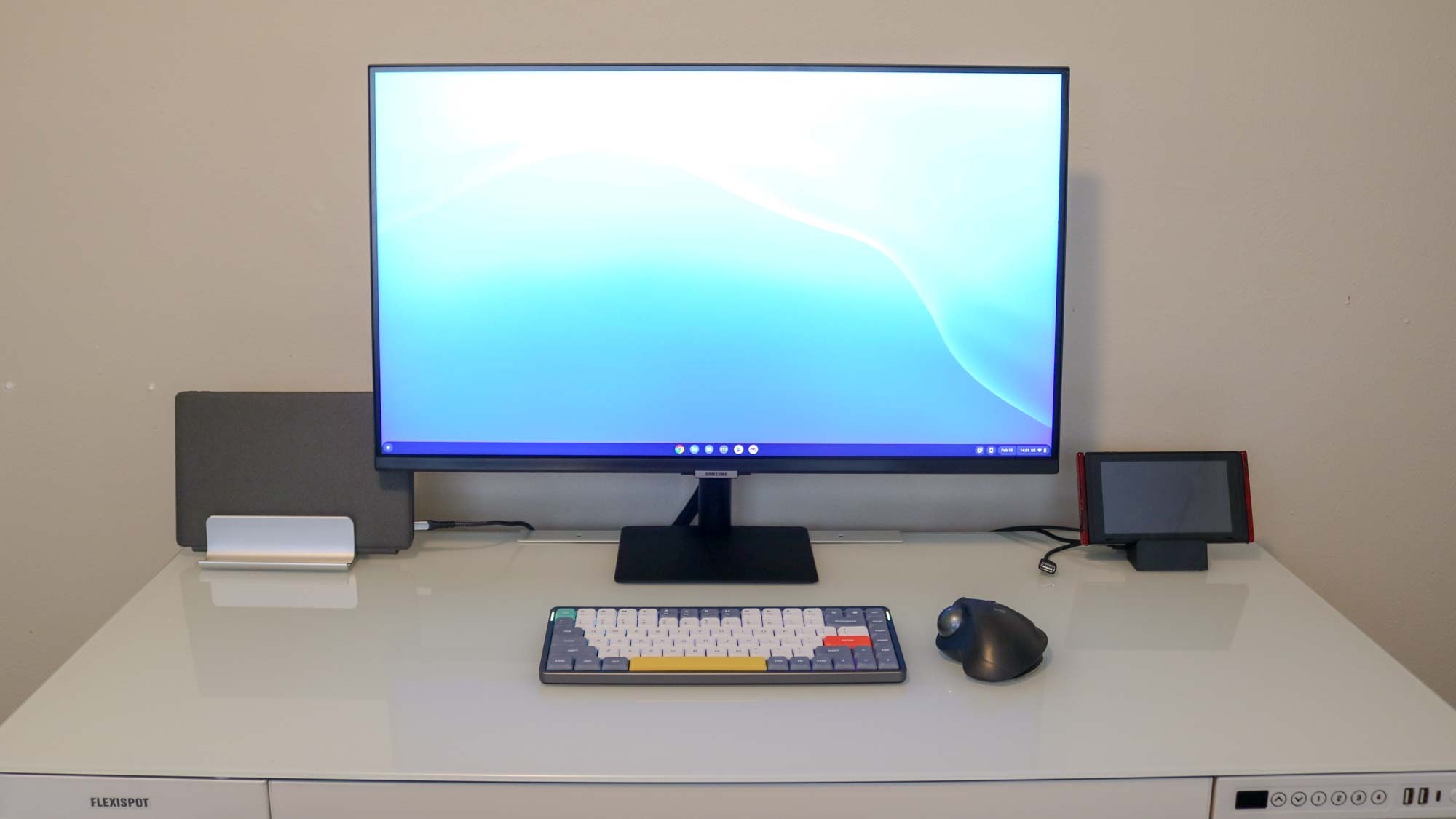
Normally when I’m working in my office, I’m surrounded by screens. From the DIY digital dashboard that hangs on my wall to the ultrawide monitor with a smart display under it on my desk, there’s literally a screen everywhere I look. However, I recently had to return the monitor that was on the desk at the other side of the room.
I knew I needed another screen there to make things right but I was torn. Should I get another computer monitor or was it finally time to try using a TV as a monitor? I considered several options from a discounted Amazon Fire TV Omni to picking up another LG monitor but this time with USB-C support. However, in the end, I settled on the Samsung M7 Smart Monitor.
I had picked up the company’s lower-spec M5 Smart Monitor a few years back so that I would have a display to use for photos when reviewing the best standing desks. This time around though, I knew I wanted something a bit larger than a 27-inch monitor since I planned on using the display for light gaming and streaming TV shows and movies during my downtime. Fortunately, Samsung’s M series displays range from 24 inches all the way up to 42 inches.
Although I initially considered picking up the 32-inch version of the M5, Samsung doesn’t sell that model with a USB-C port. It does, however, include one with its M7 Smart Monitor. Even better, Samsung gave its M series monitors a refresh this year that completely slipped under my radar. However, as I have experience with the M5, I knew the included stand just wouldn’t cut it.
Smart features but a simple stand
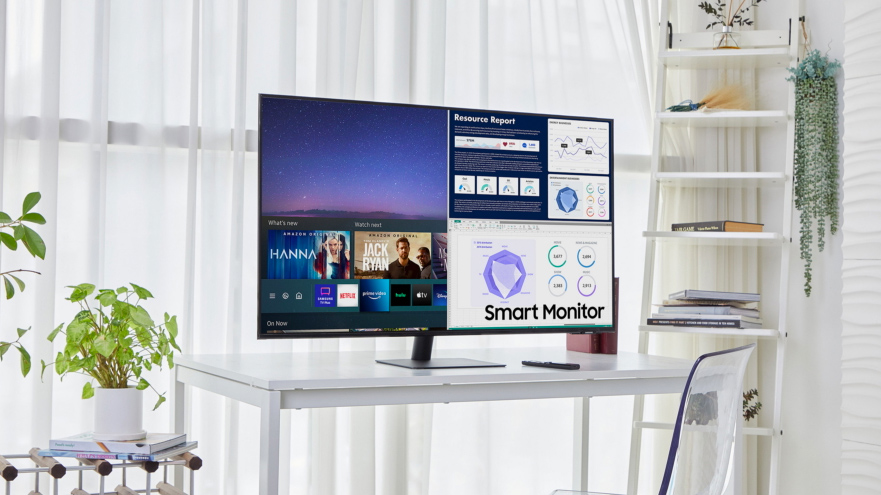
Choosing between one of the best TVs or one of the best monitors can be difficult which is why Samsung decided to combine some of the best features of both with its Smart Monitor lineup.
Part smart TV and part monitor, the Korean hardware giant’s M series was designed as a “do-it-all” screen with access to the best streaming services through its Tizen smart TV platform along with PC-like functionality built-in thanks to Microsoft 365 support. There’s also Samsung DeX for wirelessly connecting one of the best Samsung phones along with Apple AirPlay 2 support.
The Samsung M7 Smart Monitor I picked up has a bevy of ports on the back including two HDMI ports, one USB-C port with 65W power delivery and three USB-A ports for connecting a mouse, keyboard and a webcam if you want to use it like a PC. In fact, it actually has more ports than its successor the Samsung M8. However, besides its included camera, the M8 does have one more thing the M7 doesn’t — a height adjustable stand.
Get instant access to breaking news, the hottest reviews, great deals and helpful tips.
Samsung’s M5 and M7 monitors both have VESA holes for wall mounting but unlike with other monitors, these holes aren’t used for the monitor stand. Instead, the included stand screws into two holes just below the VESA ones. While this could be useful if you plan to mount one of the best mini PCs to the back of your monitor, it hinders the M5 and M7’s ergonomics since you can’t raise the display to eye level.
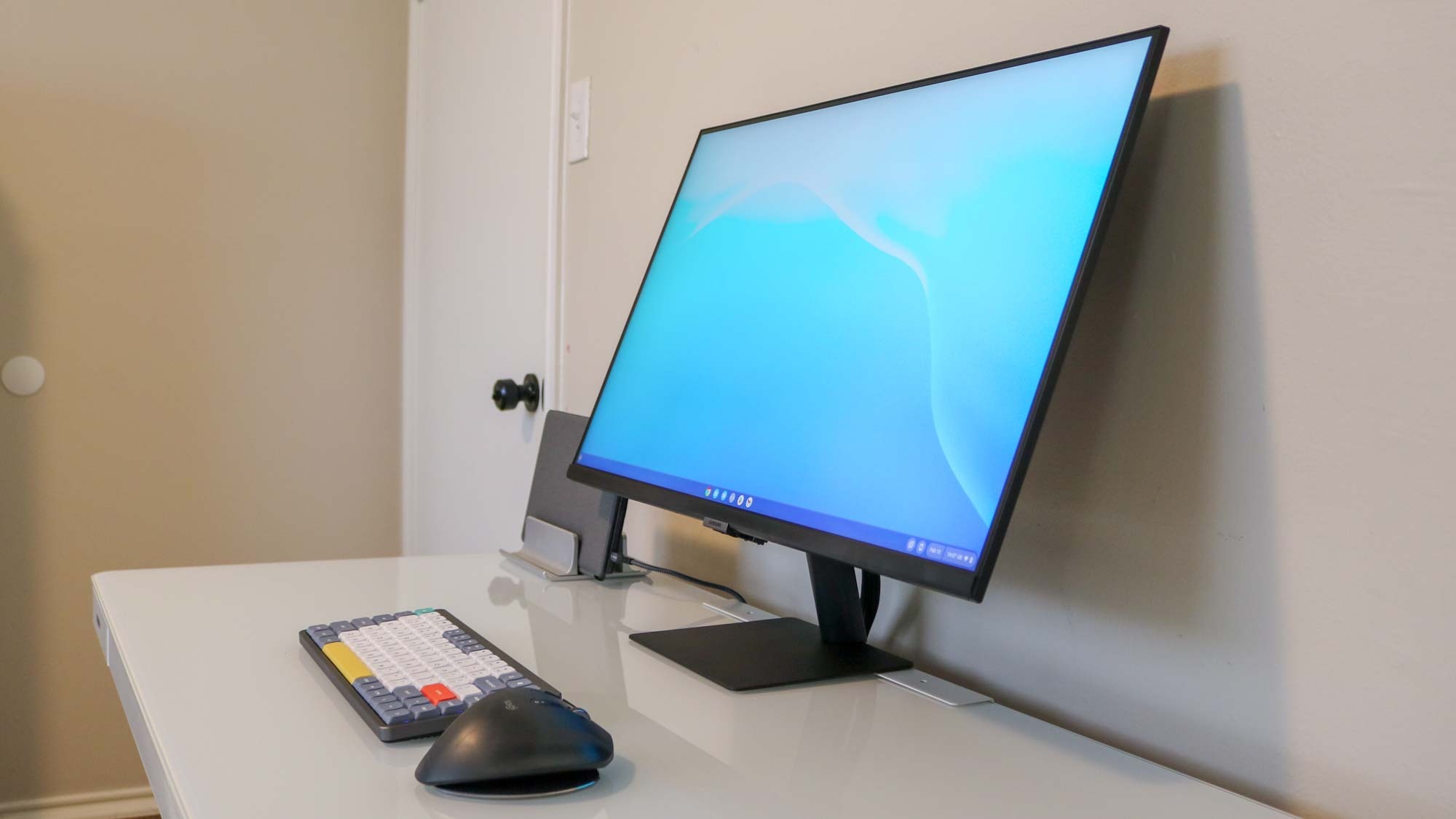
The Samsung M5 and M7 can be titled up to 15º and this can make viewing what’s on the screen a bit easier. However, if you’re tilting your head down to look at your monitor over long periods of time, you’re actually straining your neck. Instead, the top of your monitor’s screen should be at or slightly below eye level to avoid putting unnecessary strain on both your neck and shoulders.
A higher monitor with better cable management
As I was already familiar with the fact that the M5 didn’t have an adjustable stand, I ordered a monitor stand from Hemudu ($30, Amazon) along with my new M7 monitor. While I normally would have used a monitor arm instead, the Flexispot Comhar standing desk I’m using with the monitor has a glass top I didn’t want to risk damaging.
Putting the monitor stand together was really easy as there were just two screws needed to attach the base to the stand. From there, I used the provided screws to install the VESA adapter bracket onto the back of the M7 monitor. The monitor stand I chose has four height levels but I had to be careful when picking the right height since you can’t adjust this after you’ve attached the monitor to the stand.
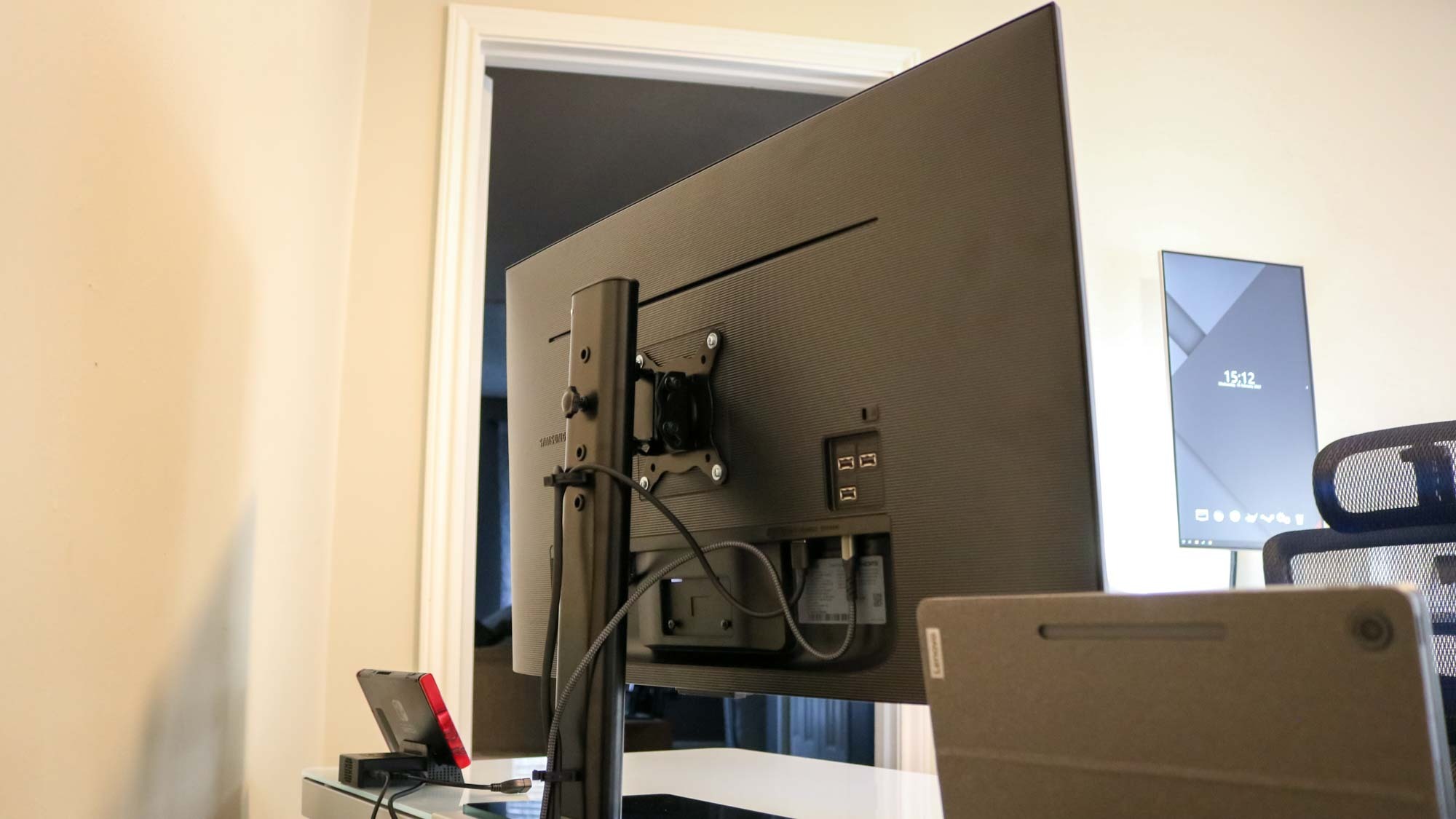
Besides lifting my monitor a bit higher up, I also like how there are brackets on the back of the stand to make it easier to manage all of the cables from the monitor. Samsung’s included stand only has a single bracket and I could see some cables poking out the first time I set it up.
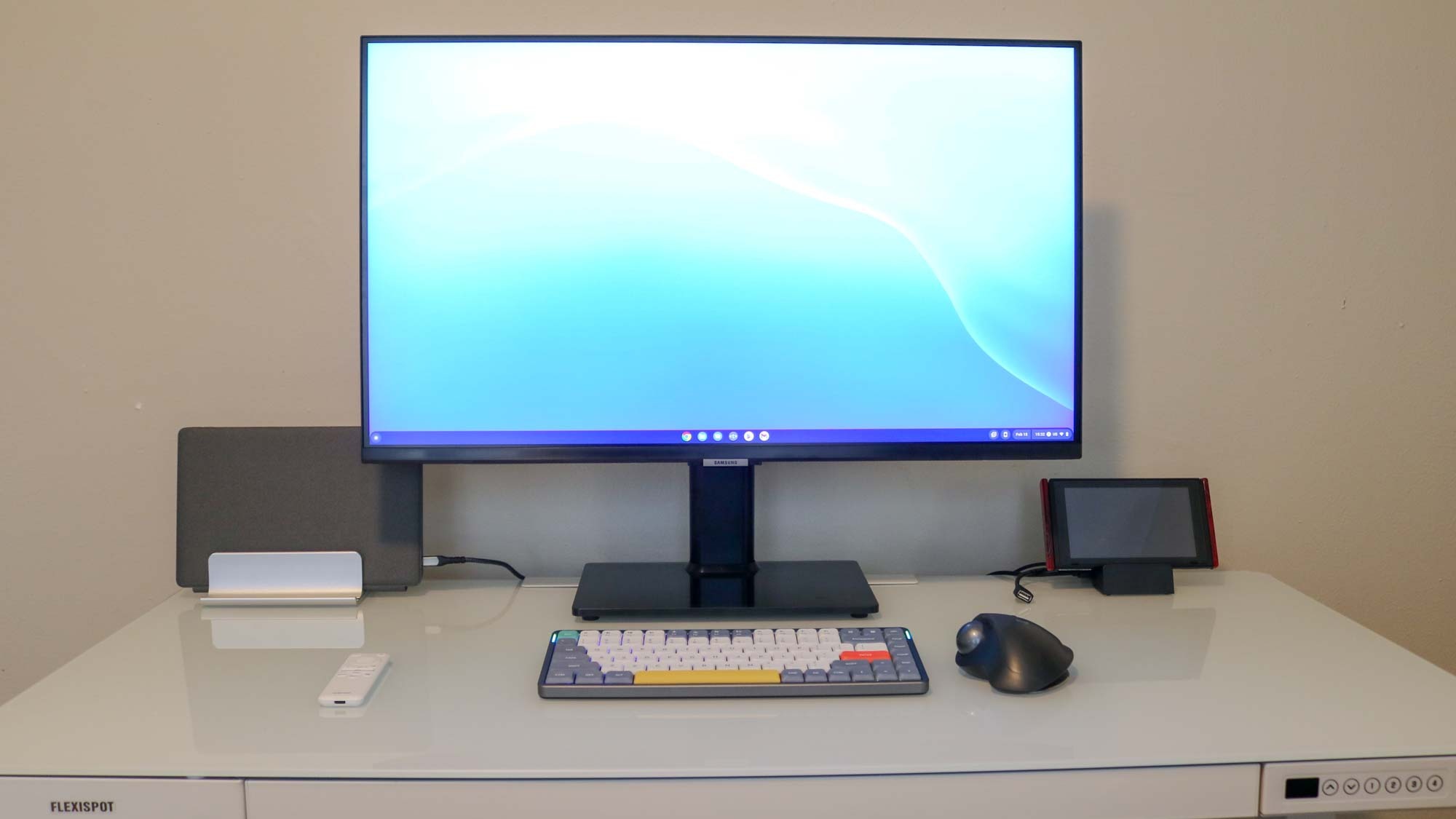
I'm very happy with the finished product as I no longer have to tilt my neck down to have the display at eye level. Also, the black tempered glass on the monitor stand’s base pairs really with the tempered glass top of the desk. There’s also more room under the monitor for accessories though the Nintendo Switch on the right side of the desk would fit under there nicely as well.
A monitor stand or arm can completely transform your desk setup
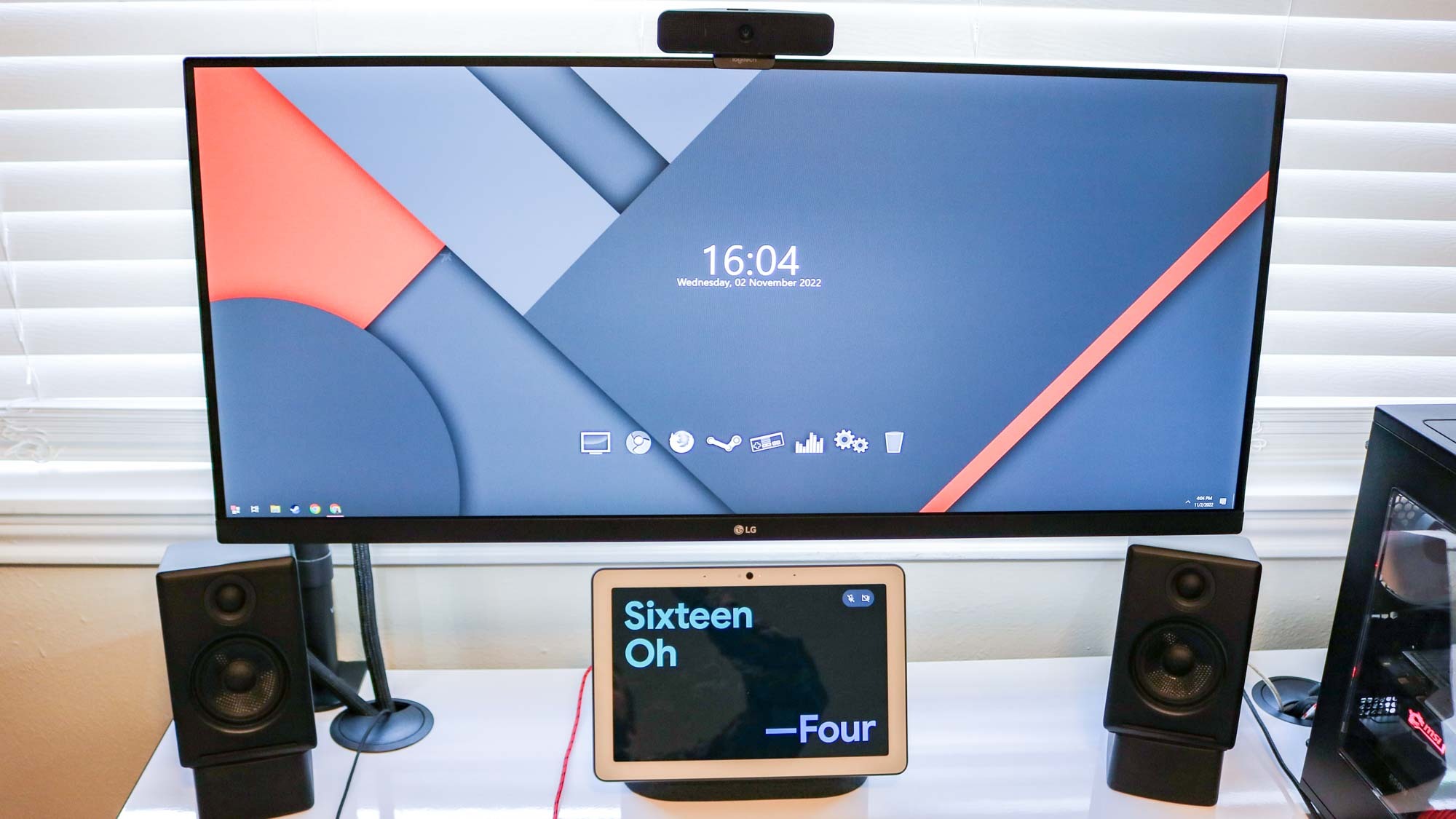
If you’re working from home or even if you spend a lot of time at your desk at the end of the day playing games or browsing the web, investing in your desk setup makes a lot of sense. Sure, you can just use one of the best laptops on their own but if you want more screen real estate, you’re going to want to connect your laptop to a monitor. Meanwhile, if you’re a desktop user, you already have a monitor.
While high-end monitors often come with adjustable stands, mid-range and cheaper models don’t. However, if you make sure that whatever monitor you end up getting has VESA holes on the back, you can always upgrade to a height-adjustable monitor stand or even a monitor arm down the road.
Third-party monitor stands are great for raising the height of your monitor but a monitor arm will give you even more flexibility with the added bonus that they take up even less desk space. Either way, monitor stands and monitor arms are a pretty inexpensive investment that will help you get the most out of both your desk and your monitor.

Anthony Spadafora is the managing editor for security and home office furniture at Tom’s Guide where he covers everything from data breaches to password managers and the best way to cover your whole home or business with Wi-Fi. He also reviews standing desks, office chairs and other home office accessories with a penchant for building desk setups. Before joining the team, Anthony wrote for ITProPortal while living in Korea and later for TechRadar Pro after moving back to the US. Based in Houston, Texas, when he’s not writing Anthony can be found tinkering with PCs and game consoles, managing cables and upgrading his smart home.
